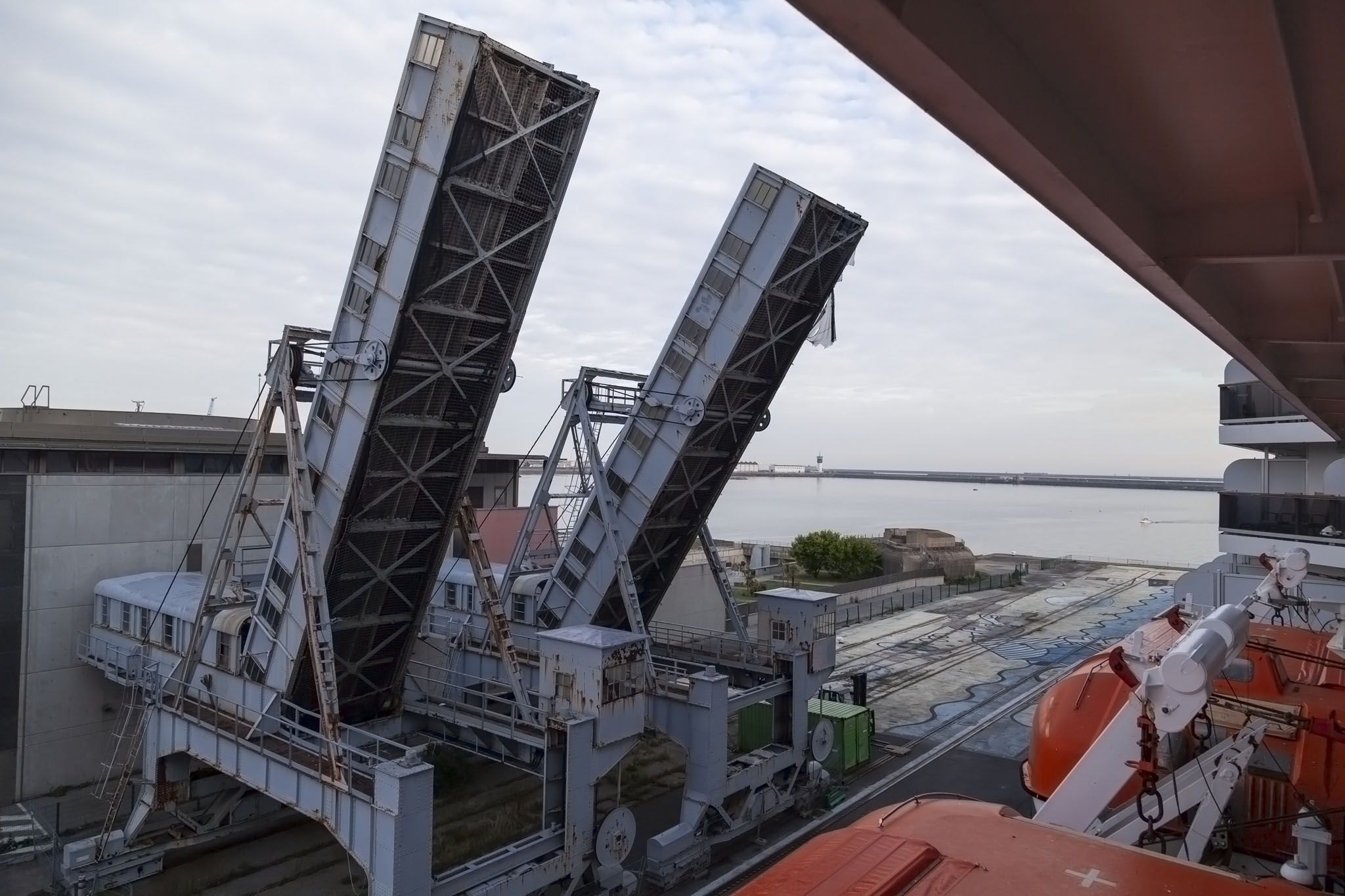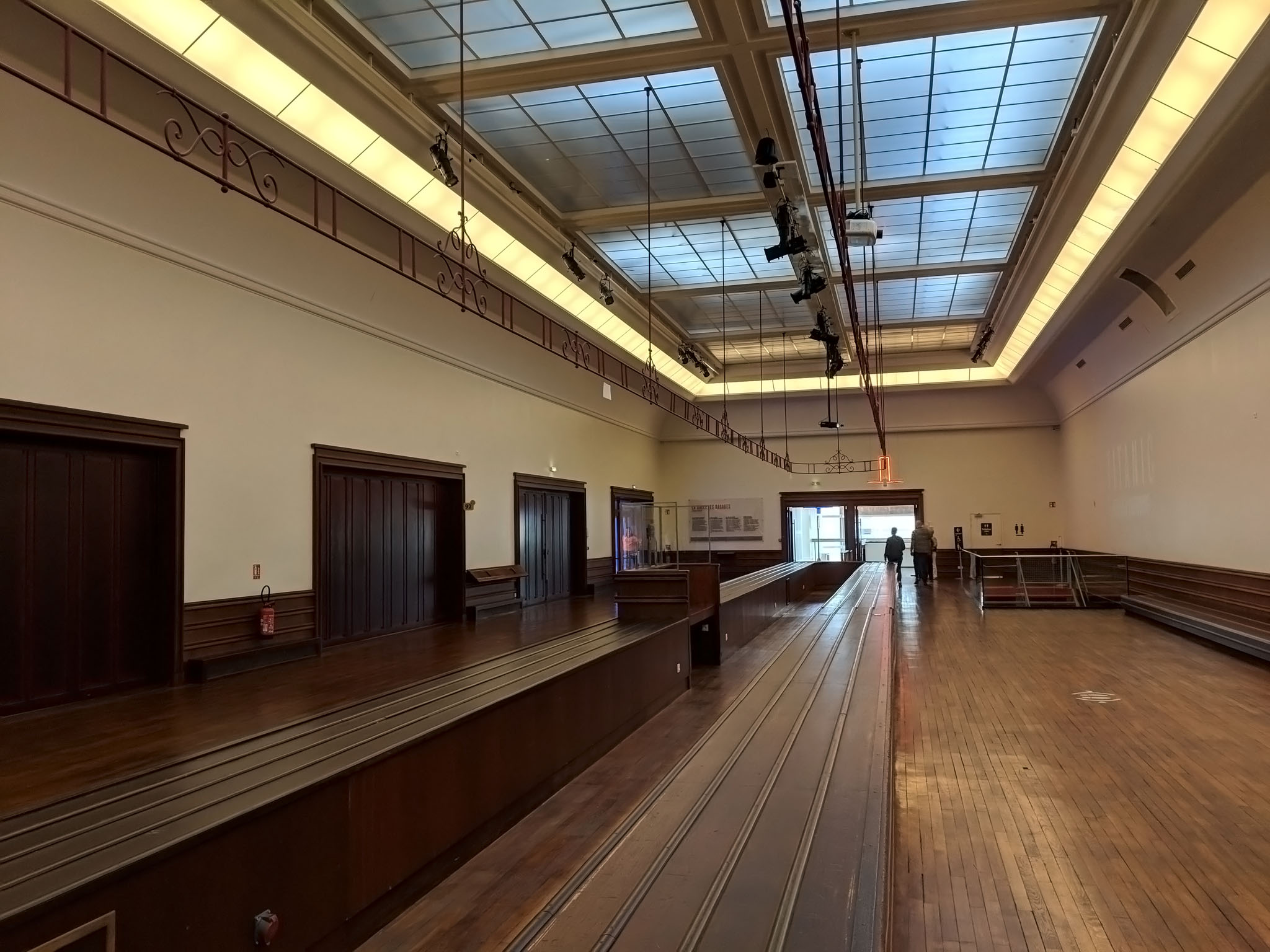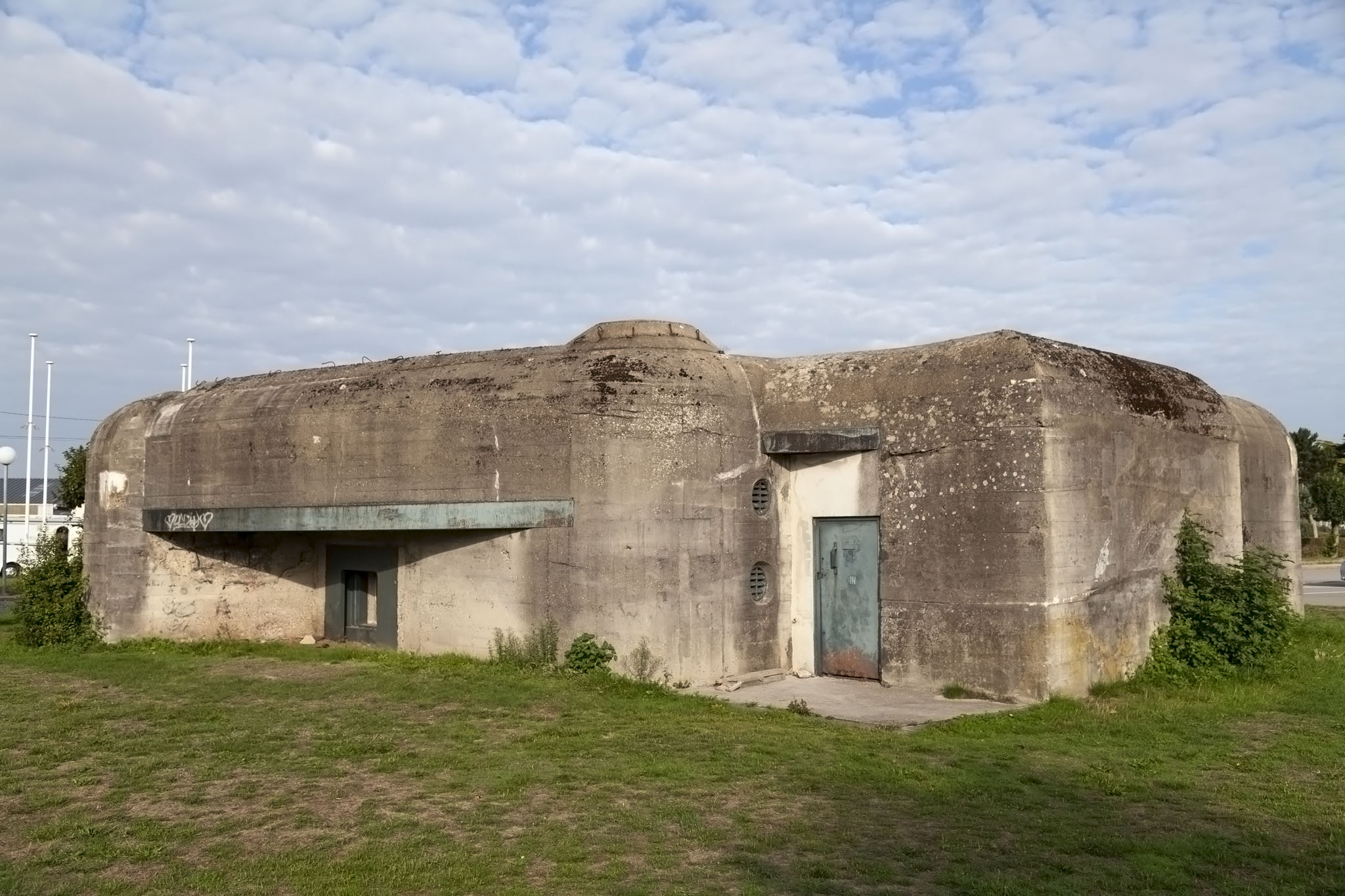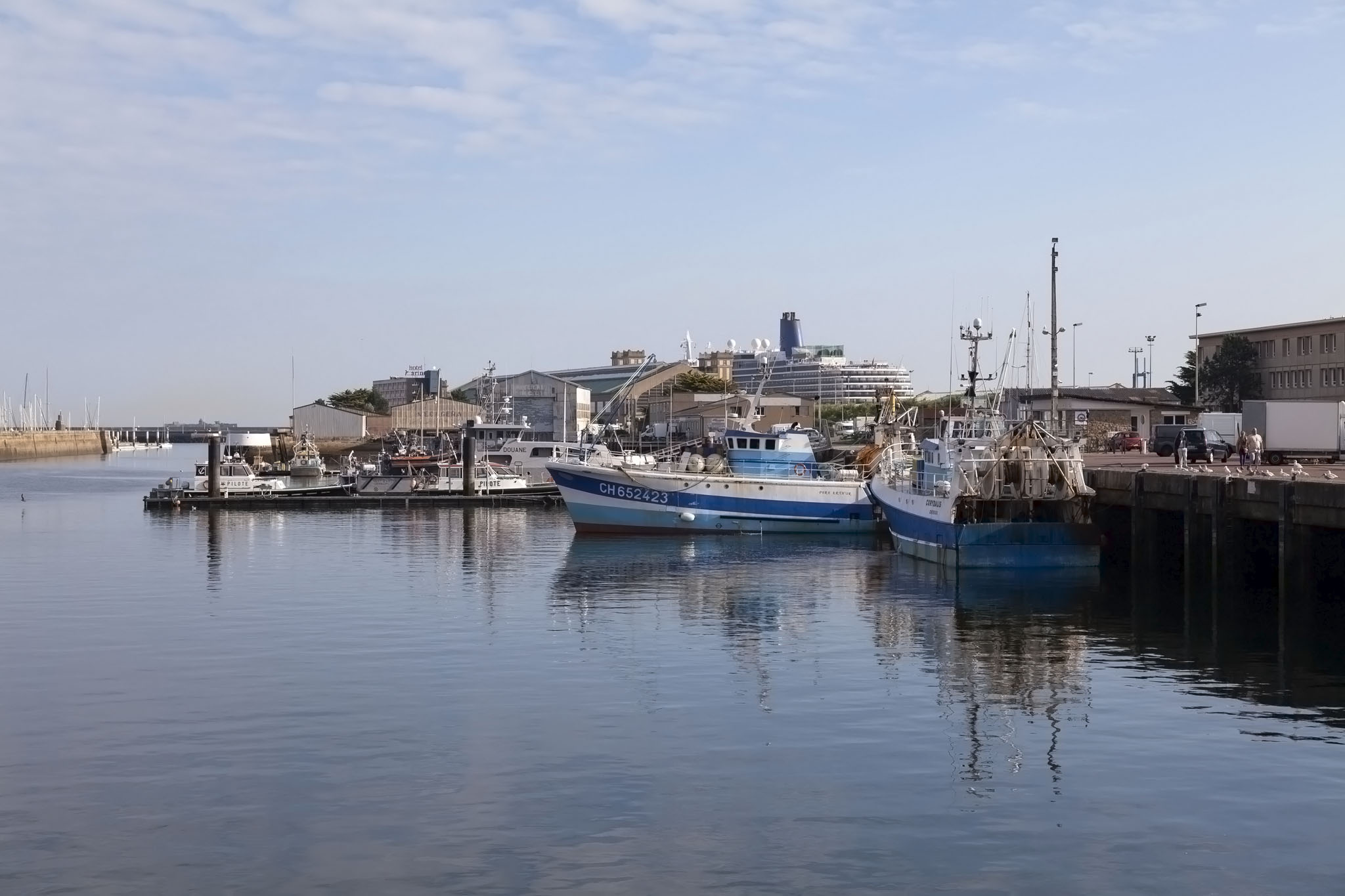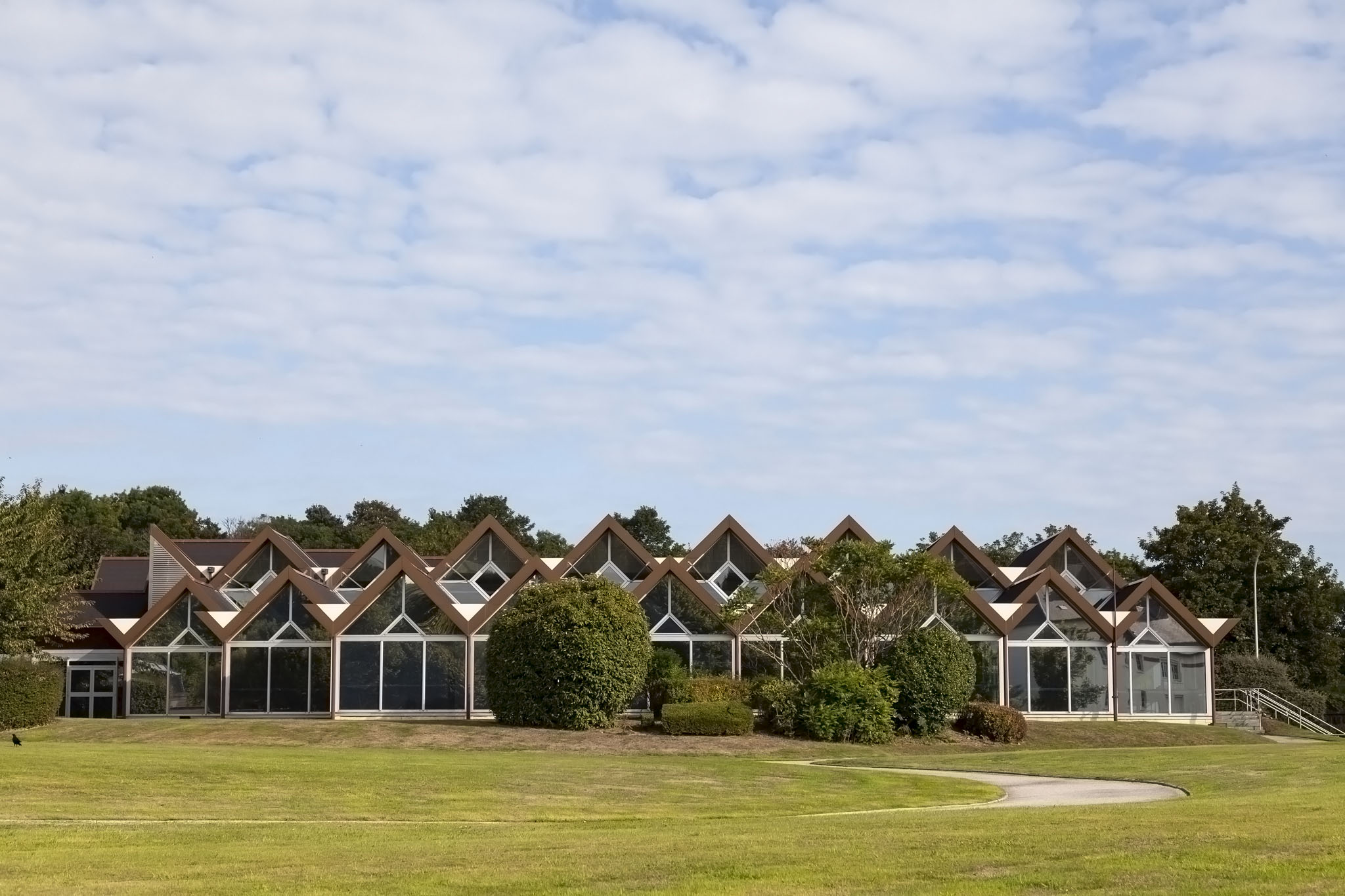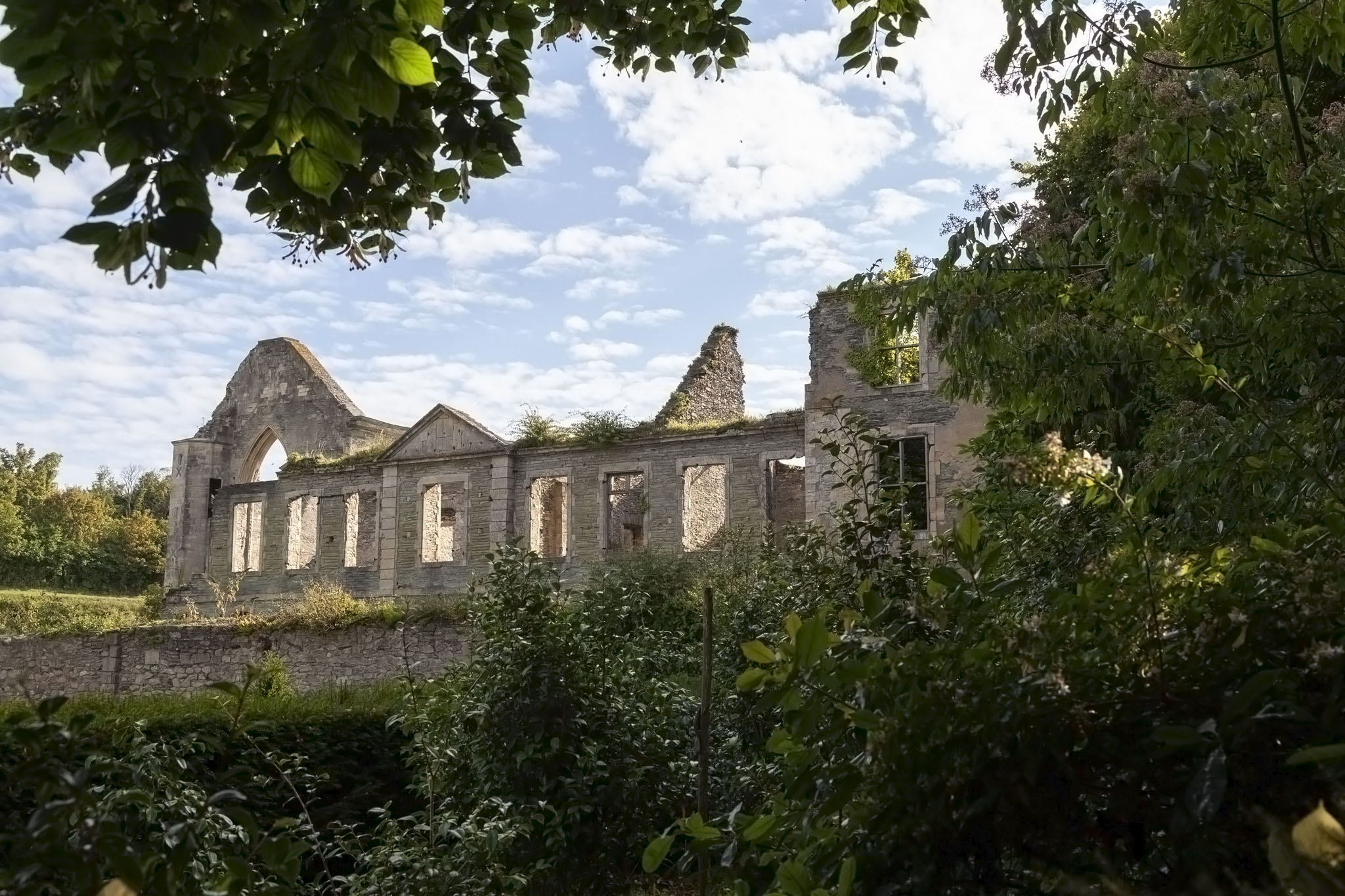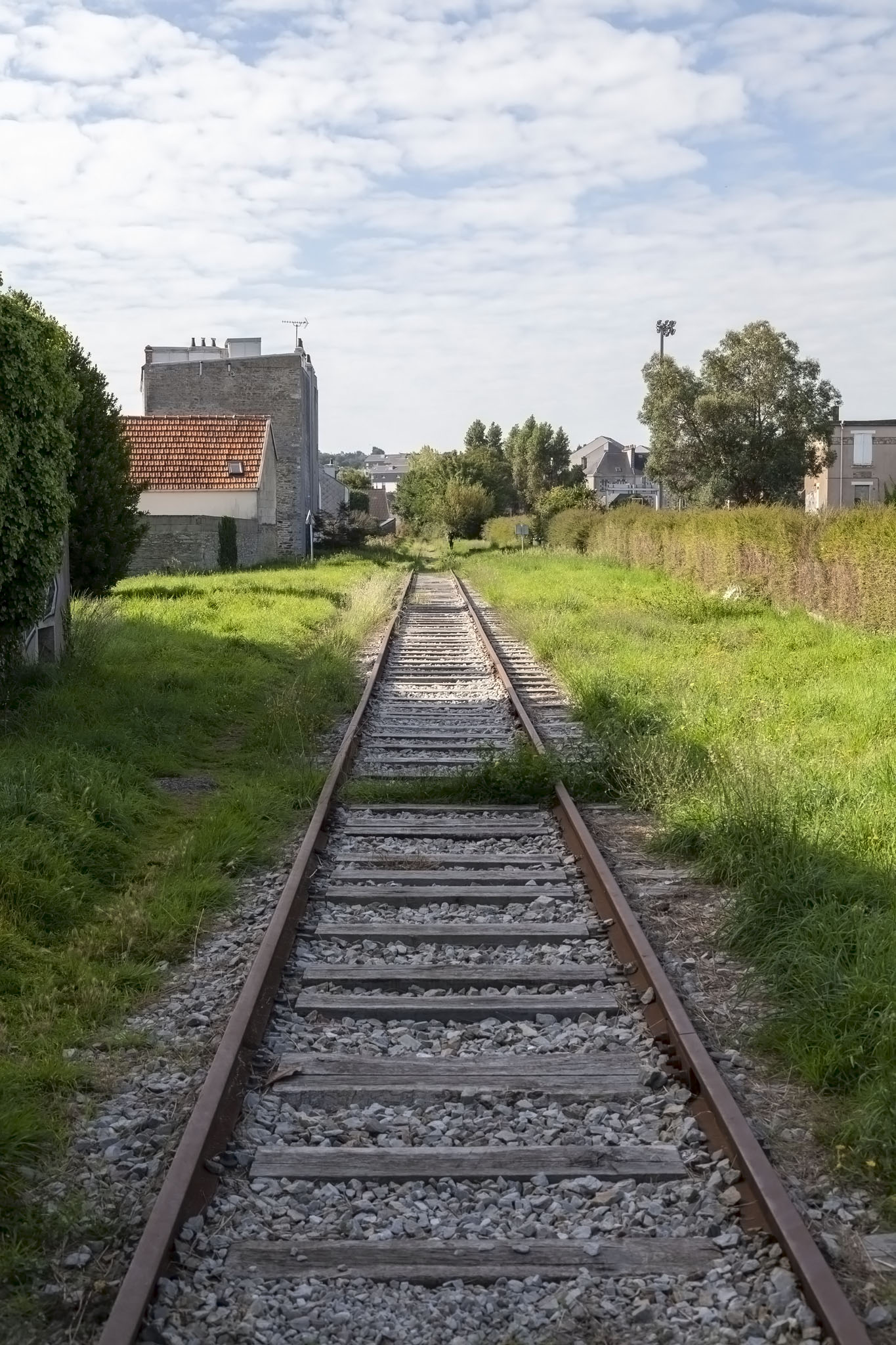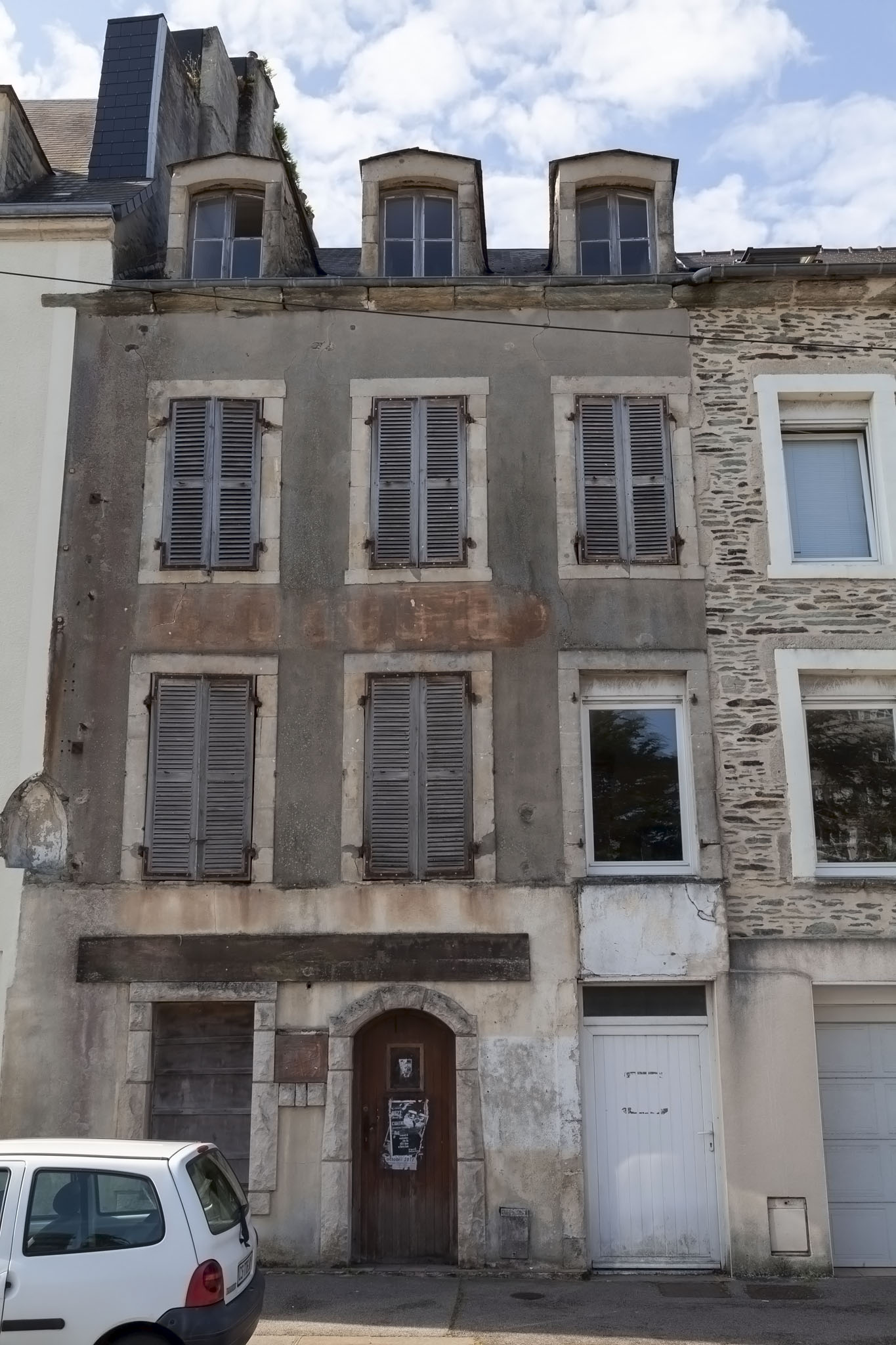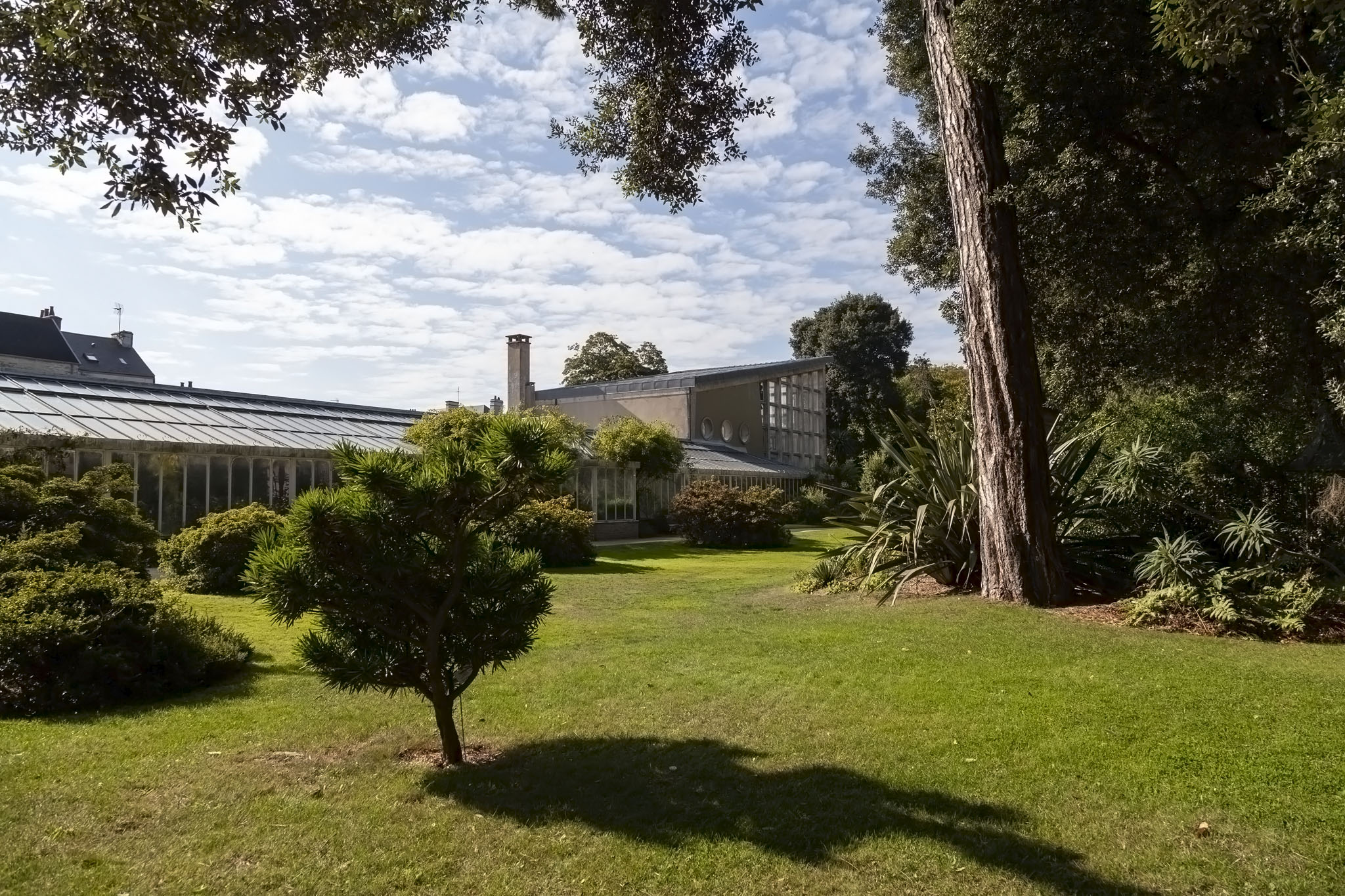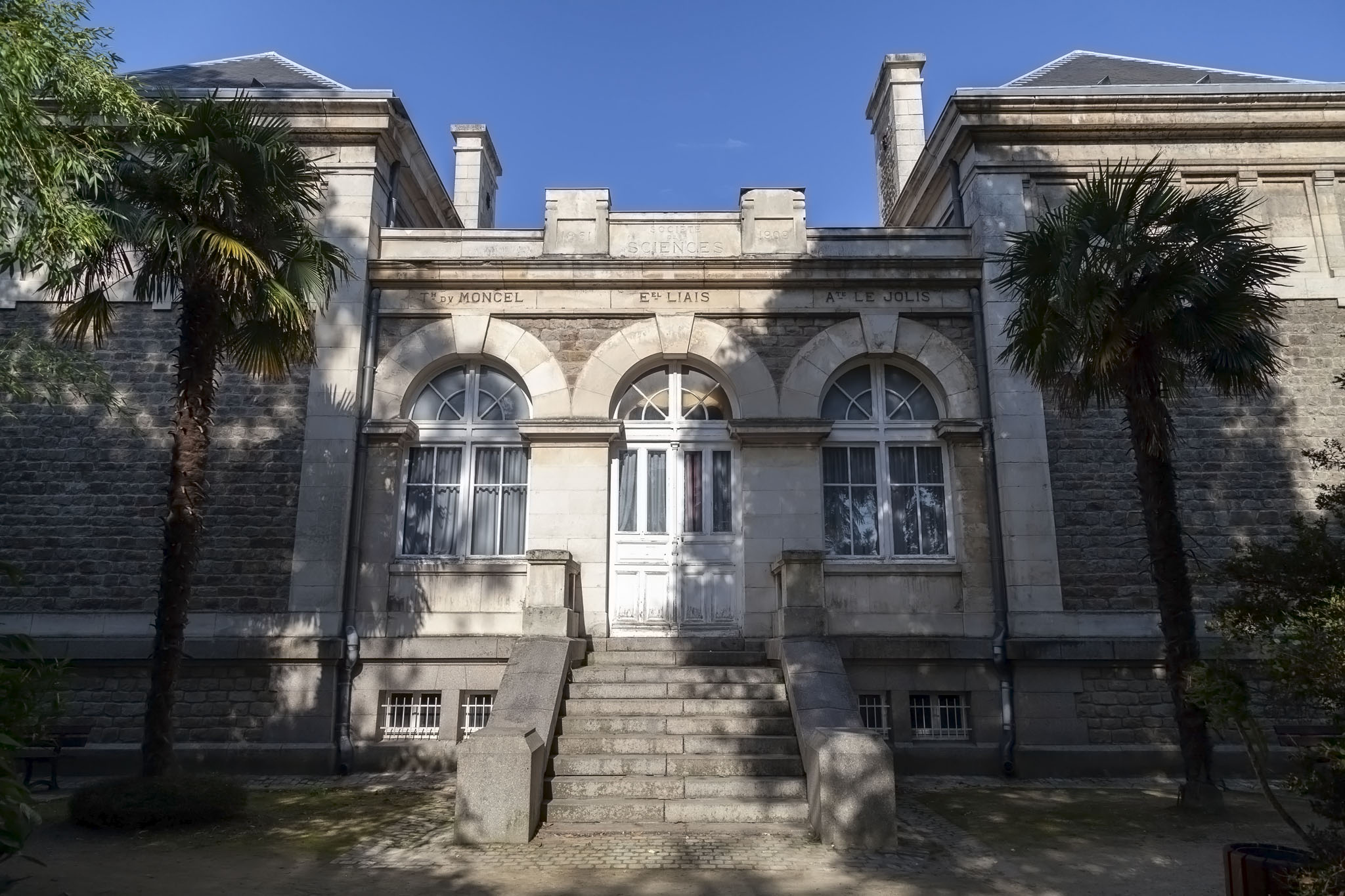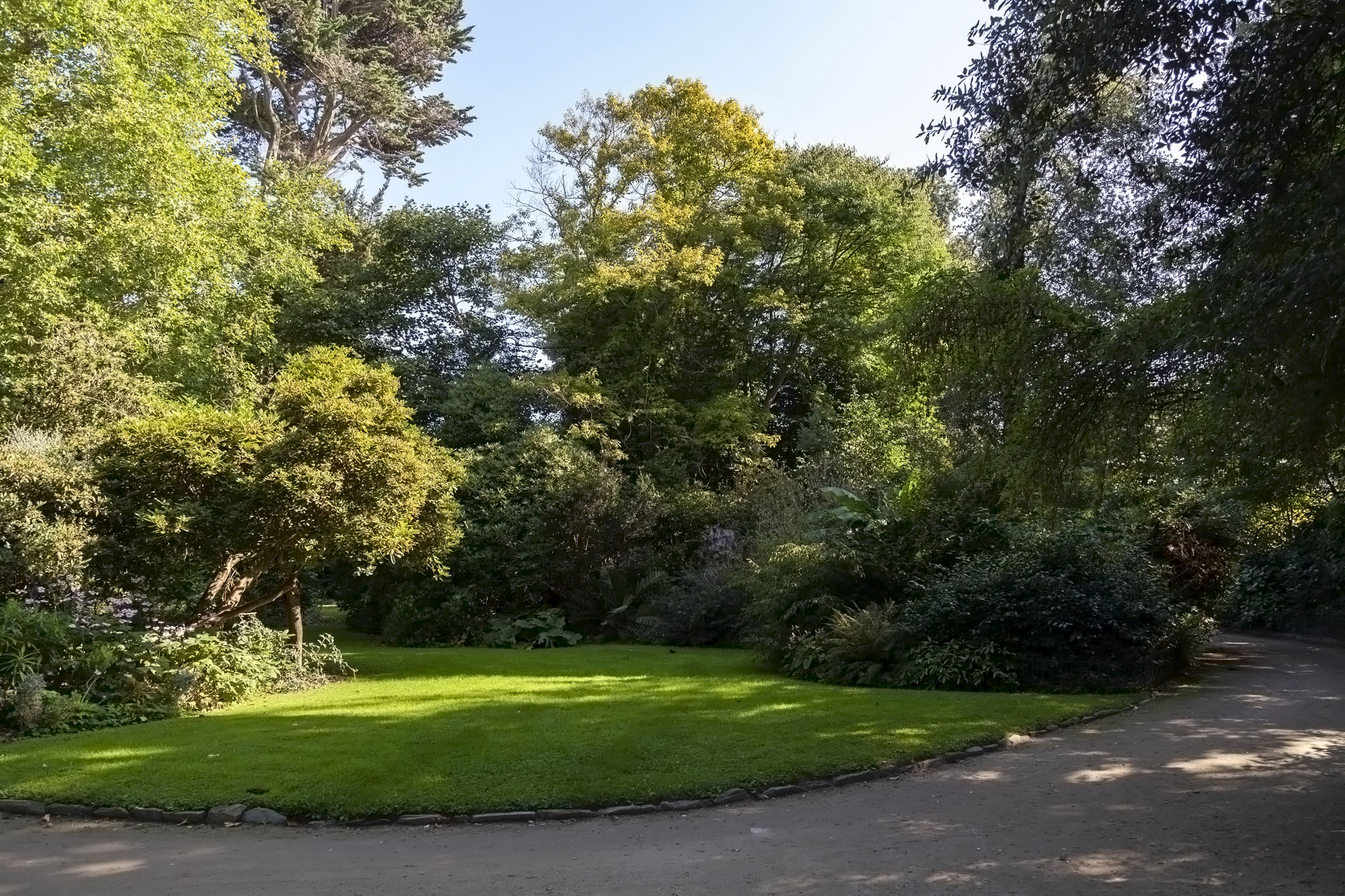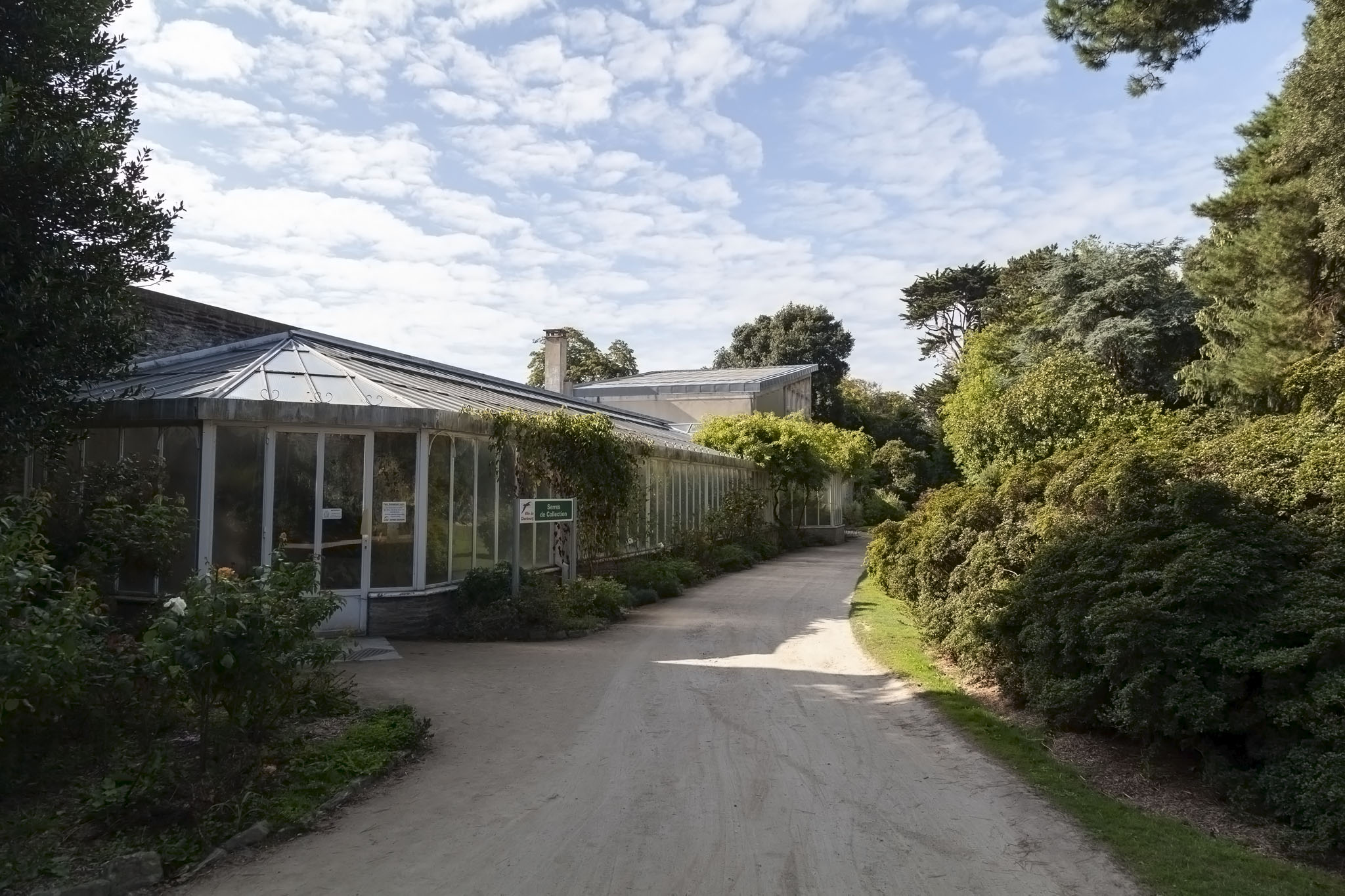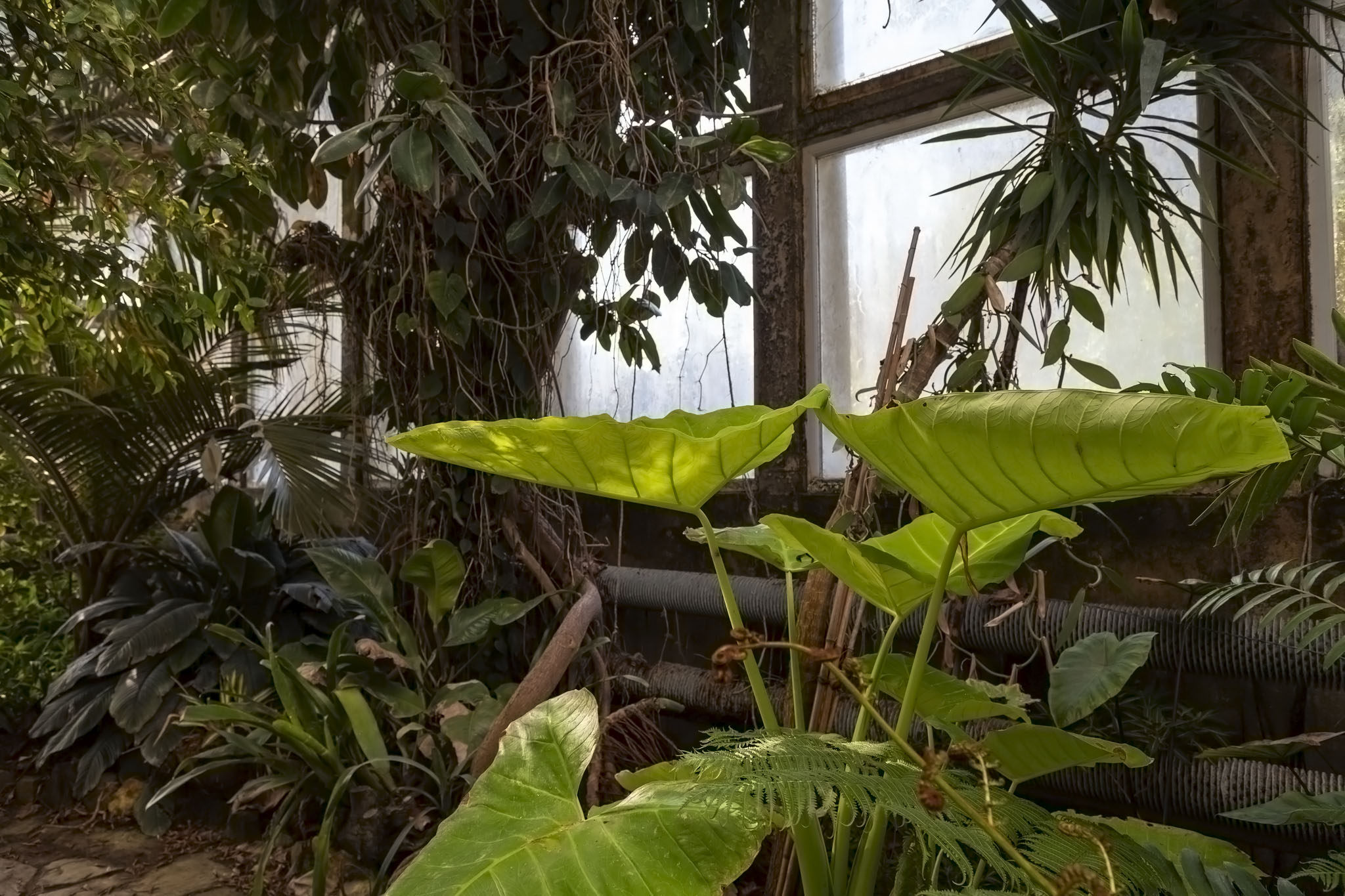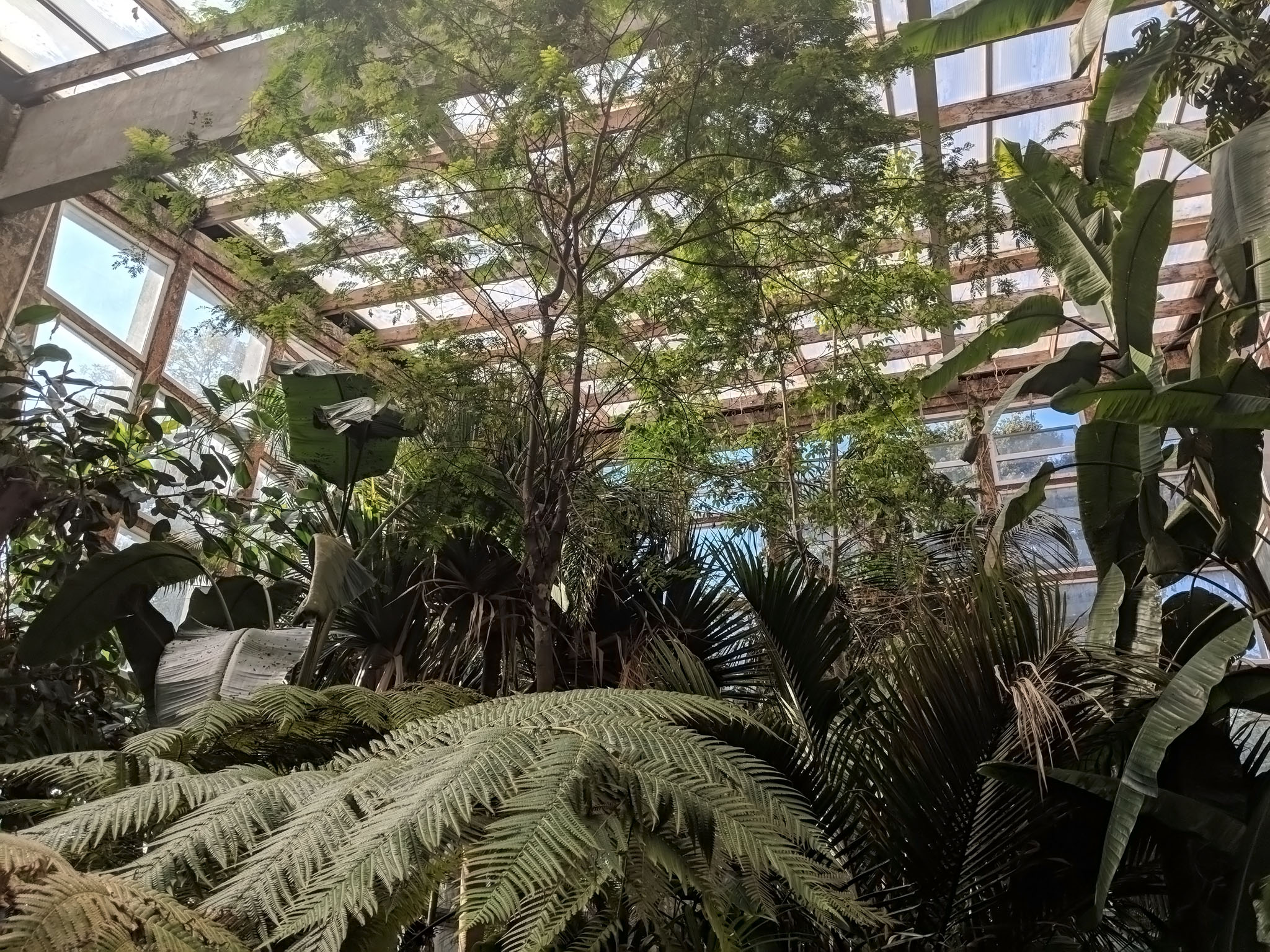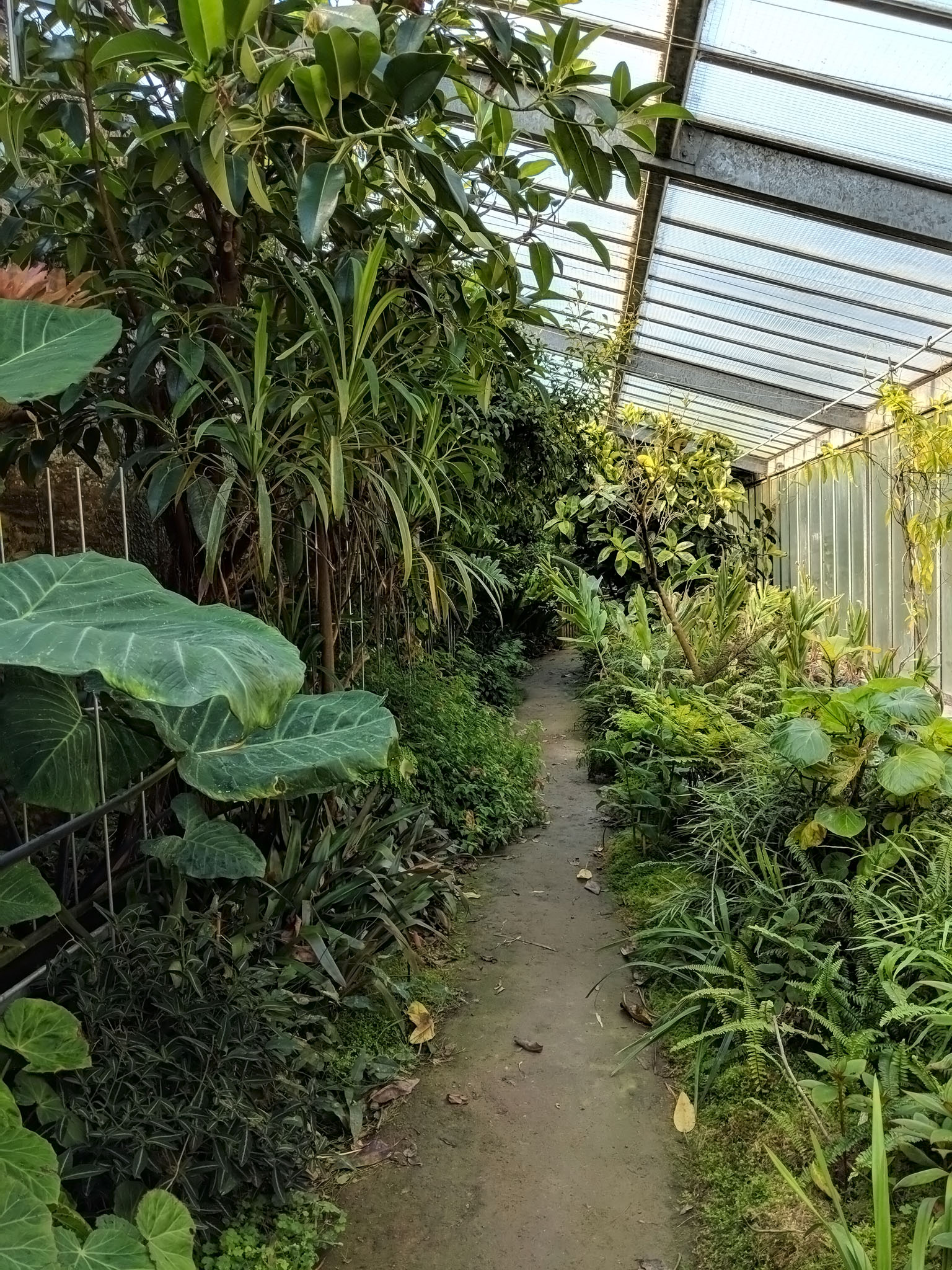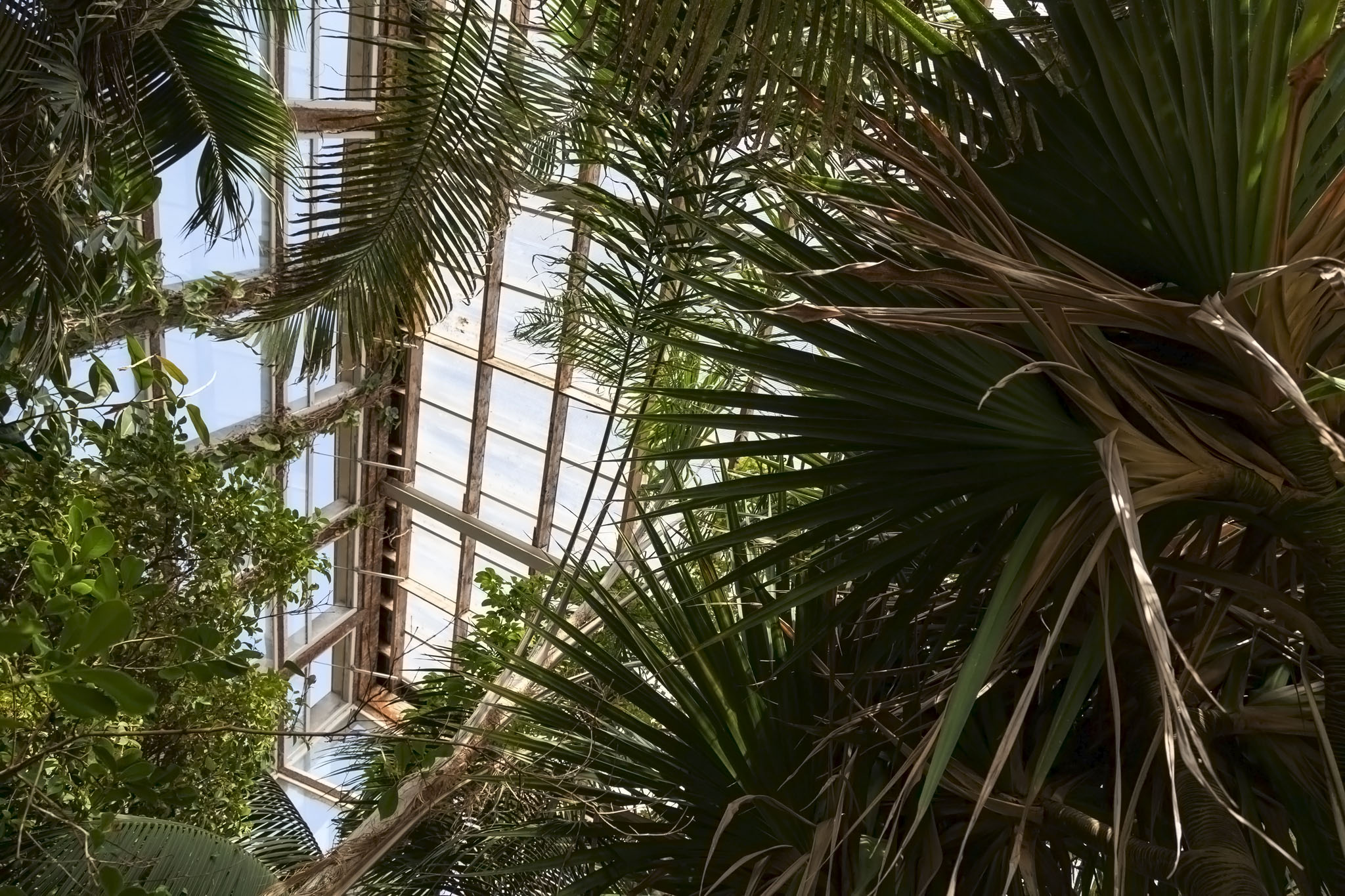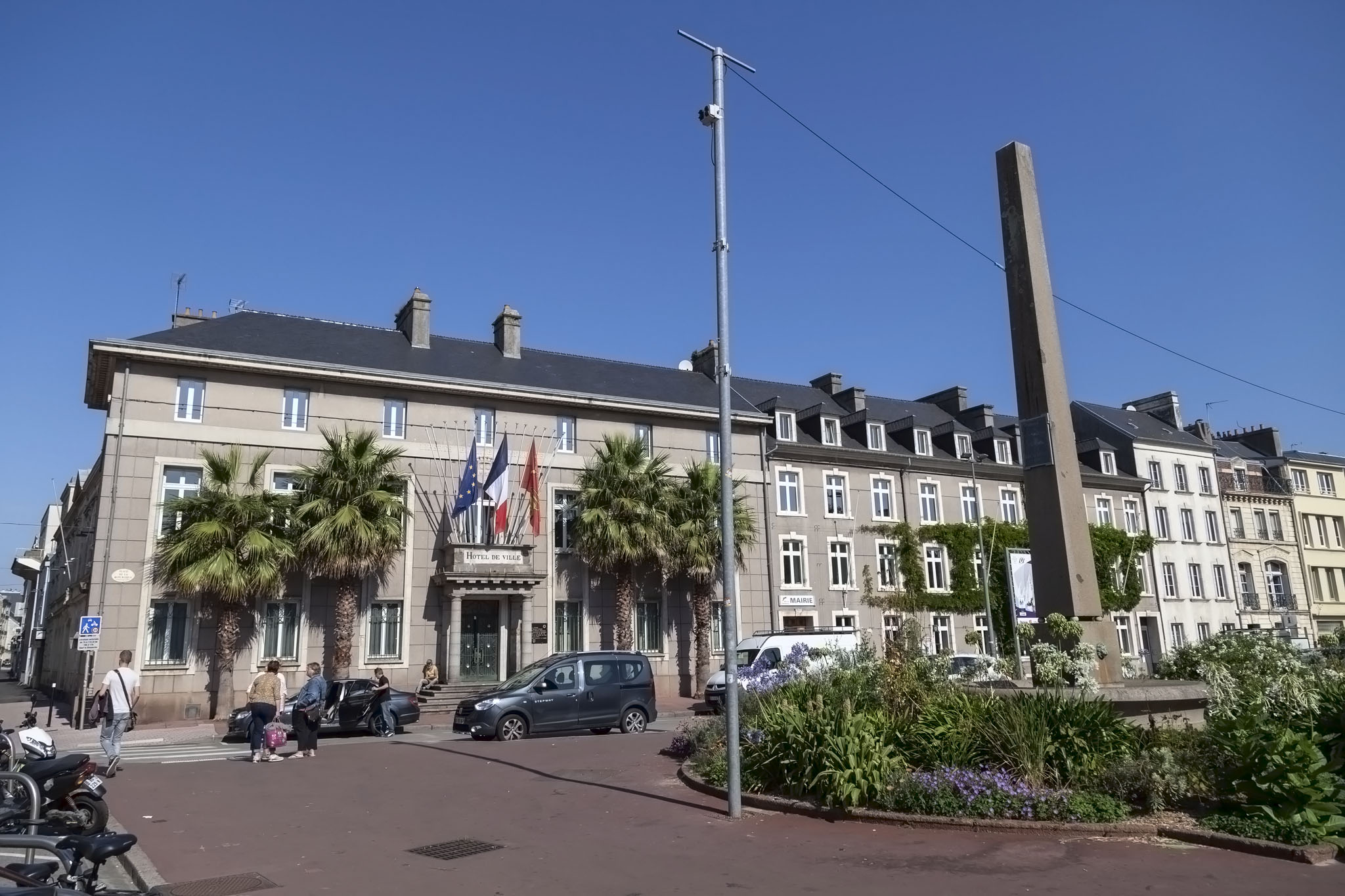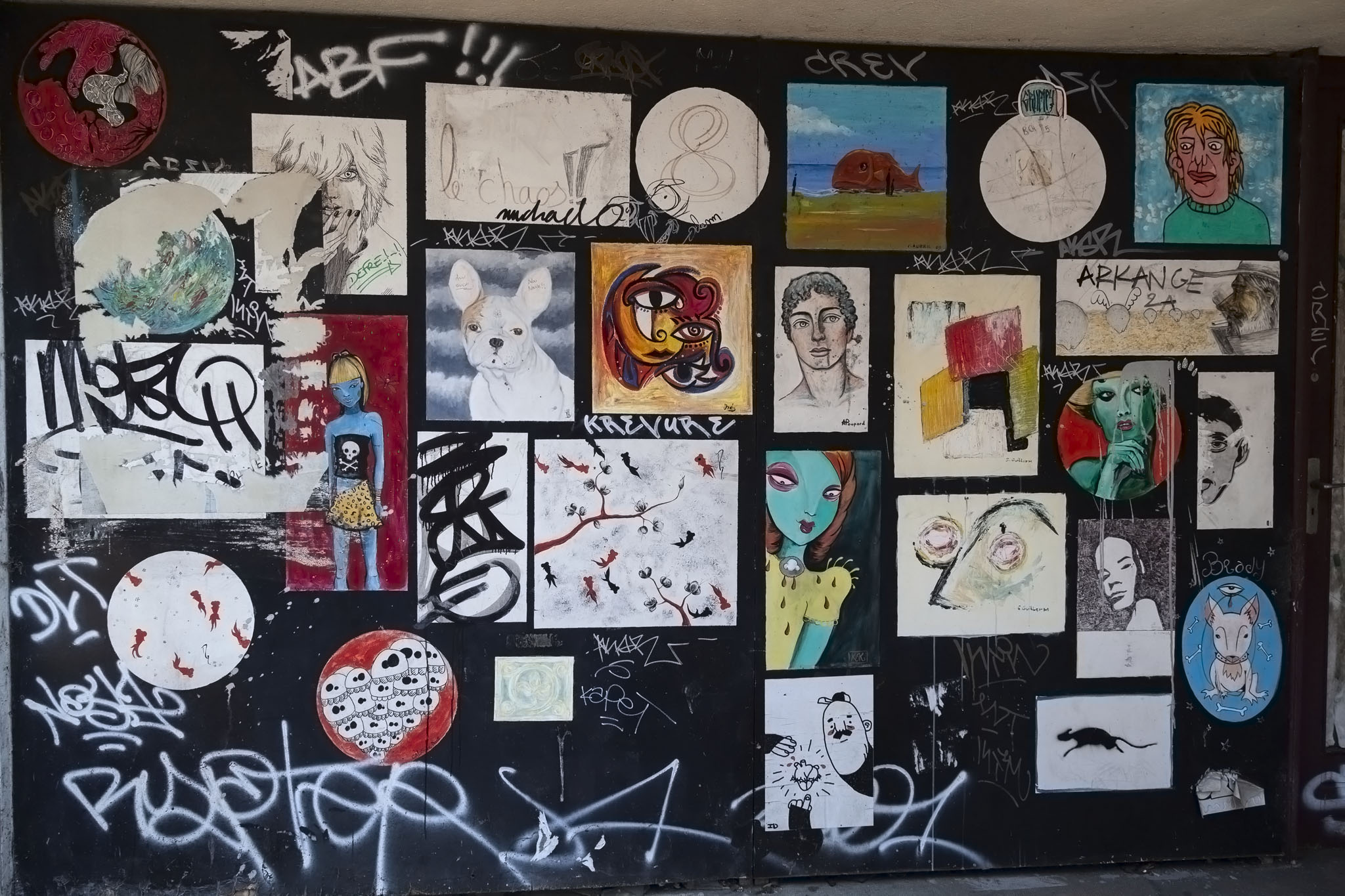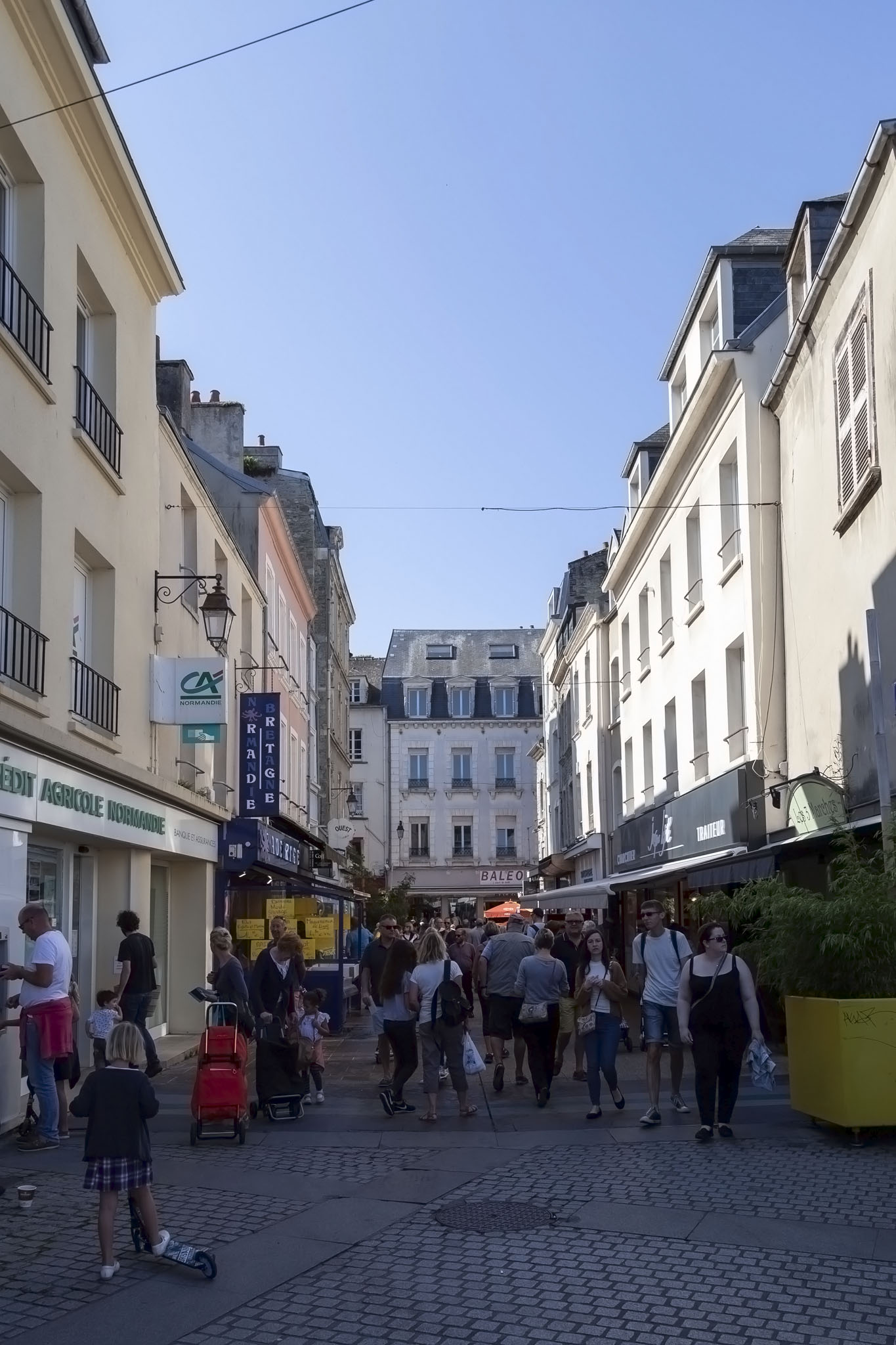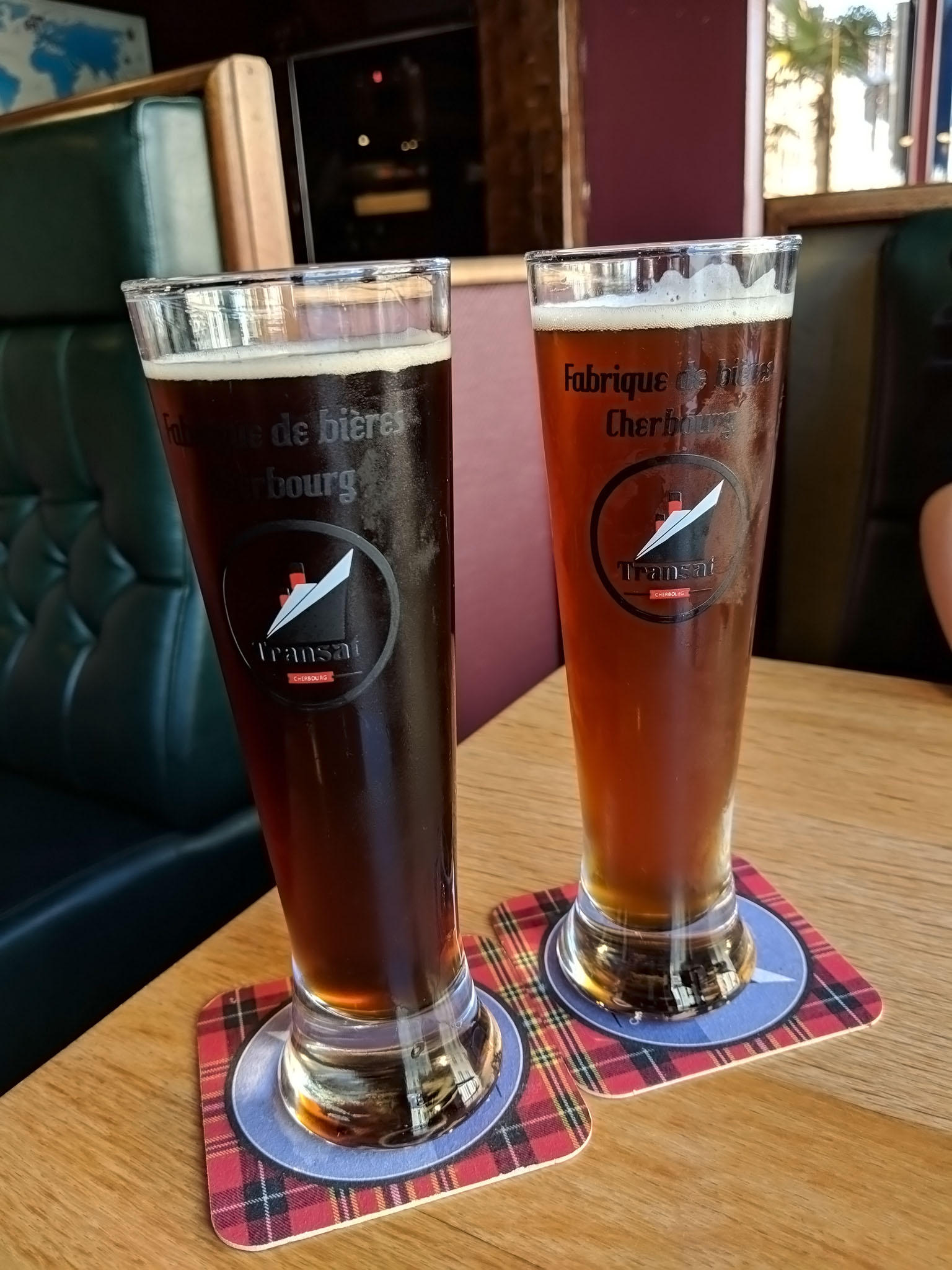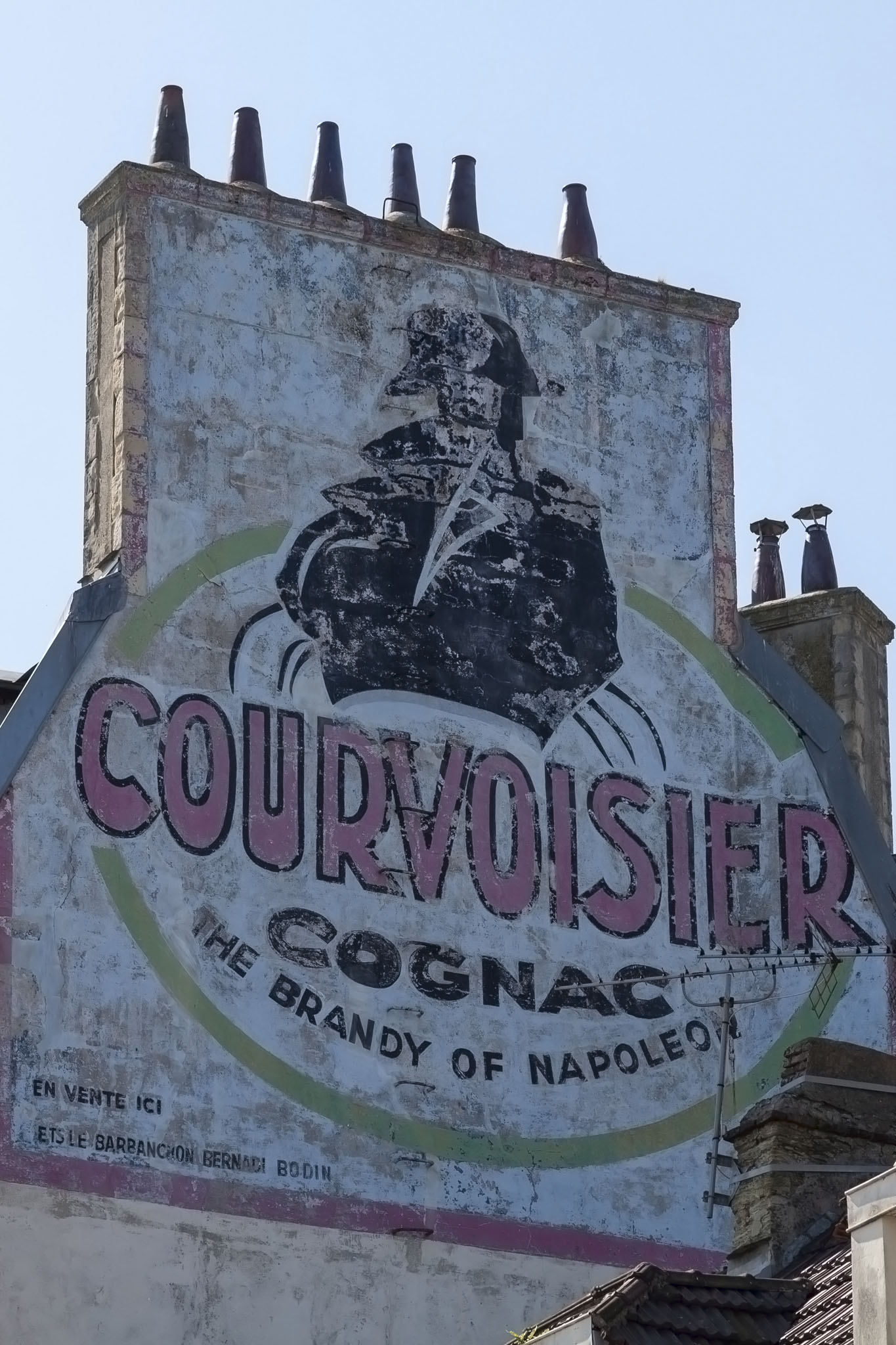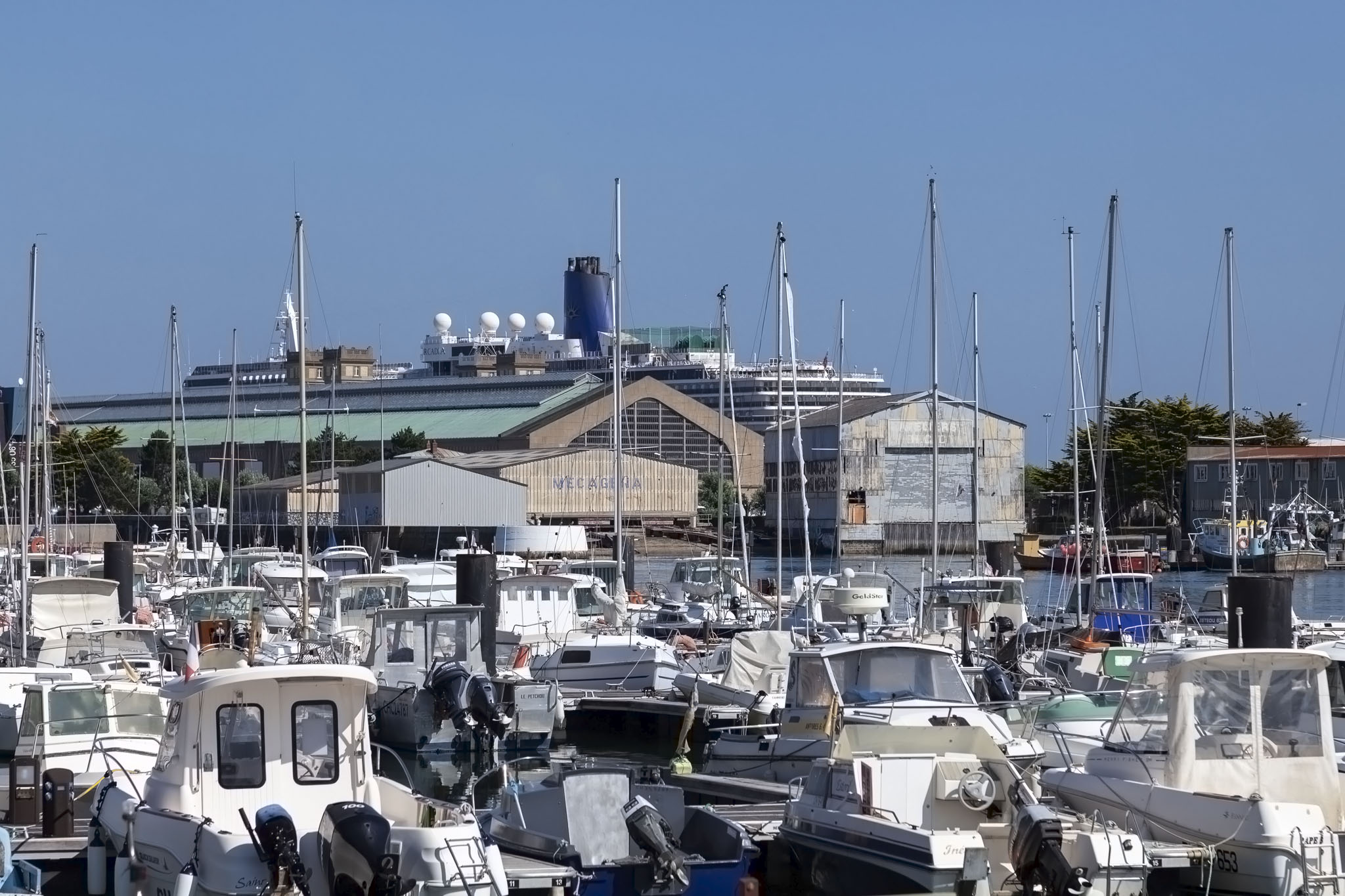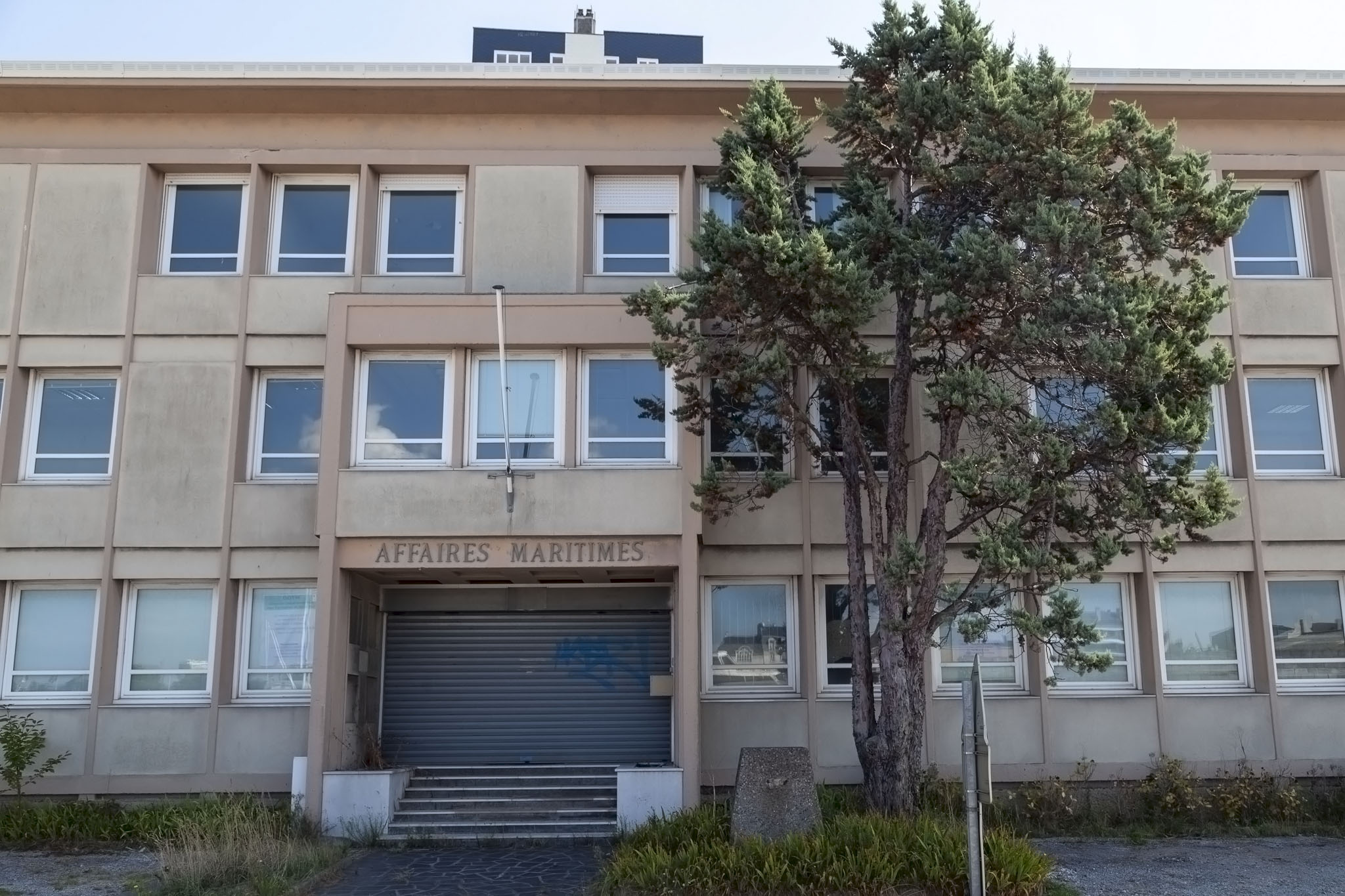On the first weekend of September 2018 we took a short cruise on P&O Cruises Arcadia to France and Guernsey. The port we docked at in France was Cherbourg and this turned out to be quite momentous as it was the first time we’d docked in France at the port we were supposed to arrive at in all our cruises. A miracle thanks to no striking, French dock workers!
We awoke with just a smidge of a hangover to views of the cruise port and adjoining Cité de la Mer exhibit from our balcony.
Finding cruise port information or things to do in Cherbourg if you’re visiting via cruise online was not particularly easy; either it’s a port not often visited by cruise ships or the people who visit don’t find a lot to write about. We thought this was odd as we’d taken a look at maps of the area and spotted quite a few places in Cherbourg that had attracted our attention: a hill-top fort, a bunker, medieval ruins, and several musuems were all the sorts of places of interest we like to take a look at when we’re visiting a new city and we saw there was a microbrewery there too to satisfy our desire to hunt down local drink. We hadn’t wanted to book an excursion during our cruise stop in Cherbourg mostly because our past record with French ports has been less than amazing and there was always the chance it would be cancelled but there was also the factor that the excursions offered – Bayeux for the tapestry, Normandy beaches, Mont St Michel – all involved fairly considerable travel times. The local attractions would do, we decided.
But we made one crucial mistake with our planning.
We were arriving on a Saturday with intentions to see historical monuments and museums early on, leaving the afternoon for drinking and shopping. We had assumed – because this is how things work at home and France isn’t that far away or that culturally different from us – that the places we wanted to visit would be open. They were not. Cherbourg’s tourist attractions don’t seem to want any tourists on a Saturday morning and, it turns out, if you want to do anything cultural or educational during lunchtimes at any point in the week then you’re out of luck too. What we discovered very late on in our planning (i.e. a few days before we cruised to France) was that the places of interest in Cherbourg we wanted to visit would not open for the first six or seven hours we were in port. Not only that, had we actually arrived on a weekday rather than a Saturday we would have found everything closing up between about 12:30 and 14:00 each day too. This is utterly baffling to us. Had this been the south of Spain where heat plays a part and siestas are common then we might have expected it. This is northern France. Why do these places not have the staff on hand to keep somewhere open throughout the day and during the morning on a Saturday? At the very least, why weren’t steps being taken to take advantage of visiting cruise ships?
This left us with few options. We knew that La Cité de la Mer would be one possibility; maritime exhibits and aquariums are things we like to see but we figured most people not taking a cruise excursion might hit that first so, as it would be right next to where Arcadia docked in Cherbourg, we would leave that to the last thing to see in order to avoid the crush. Our visit there is covered in the next cruise review post. We could have risked going to the microbrewery early and doing shopping before trying to hit something of cultural interest but with anything interesting opening just three hours before we’d need to be back on board and not wanting to go into the city, come back to hit the maritime building, then return to find a museum before turning around again to hit the ship all on the back of hopefully fuzzy heads we rejected that.
Ultimately, we decided that we would walk for a few hours to see if we could find something not necessarily on the maps or just interesting to photograph, get our drinking done, then hit Cité de la Mer early if necessary and just get back on our floating home. We were disappointed that it appeared we wouldn’t really be making the most of our time in Cherbourg but the main thing was we’d be exploring somewhere new anyway.
We left the ship, walked through the old and impressive terminal building, and headed south out of the cruise port area.
Reaching Pont Tournant in around five minutes we crossed over the bridge towards the main part of Cherbourg. This area was very attractive, offering up some lovely views across the harbour with its perfectly still water providing some gorgeous reflections of buildings in the city and boats anchored all around.
On the waterfront side of Cherbourg’s main area of shops and other businesses we spotted a bust of someone not recognisable to us. I always try to take photos of these statues as it provides something of interest to look up later. This turned out to be the Colonel Bricqueville Monument. Armand François Bon Claude, Count of Bricqueville, was a cavalry officer serving in Napoleon’s army who took part in campaigns in Prussia, Poland, Spain, and Russia. The statue was erected in 1845 and originally had two bronze reliefs on it as well but these were melted down by the Germans towards the end of World War II.
We followed the main road along the harbour, Quai Caligny, northwards then westwards past the Catholic Church of Basilique Saint-Trinité where it became first Place Napoléon (easily identifiable from the statue of Napoleon on a horse erected in 1858) and then Rue de l’Abbaye.
We weren’t completely walking on a whim here. Maps had shown that along the appropriately-named Rue de l’Abbaye there appeared to be ruins of an abbey, Abbaye du Voeu (Abbey of the Vow). Information about the place was pretty sparse but we could see it had been an abbey (obviously) as well as military barracks and a hospital, and it had a museum. What we couldn’t find out from the lack of details such as opening times was whether the museum would be accessible but we guessed that at the very least we’d be able to have a look around the ruins themselves. Alas, Cherbourg’s rather lacking appeal to tourism had other plans and the ruins, like everywhere else we were thinking of visiting, were closed until mid-afternoon. We could get reasonably close to its exterior and took a few photos but exploring inside was not to happen.
The walk from Cherbourg harbour to the abbey was about two kilometres and there was no indication that there was anything else of interest in that direction so we turned around and headed back towards the main part of the French city. Our target destination now was Parc Emmanuel Liais, location of a museum we knew would be closed but where we hoped access to the park and gardens would allow us to break up the views of buildings and main roads that had accompanied most of our walk to then.
The park was lovely. Helped by some extremely pleasant weather the greens of the garden popped out vibrantly against the clear blue sky. The spots of sun and shade were welcome as was the tranquility away from the white noise of cars passing in the city. If you’re ever in Cherbourg and there’s nothing else to do then this park is worth ten minutes to wander around and soak up the atmosphere.
Emmanuel Liais was an astronomer and botanist. He went to Brazil in 1858 to witness a solar eclipse but ended up staying on until 1881 doing mostly astronomical research (a Martian crater is named after him and he discovered a comet). Returning to Cherbourg he became mayor and imported numerous plants from Brazil and Asia which became part of the collection he bequeathed to the city on his death.
The museum to Emmanuel Liais was closed, as expected (thanks Cherbourg), but knowing his history we’re sure it would have been interesting to take a look at. The maps we’d seen hadn’t shown that there was another large building in the park and this turned out to be a botanical greenhouse hosting some of the specimens Liais introduced. Incredibly, it transpired that this was actually open at the time we were there. Despite us not seeing another soul inside it as we explored its small but interesting interior it should be noted that this building closes for lunch.
I was particularly taken with the concrete and glass, modernist design elements of the greenhouse, both inside and out.
We decided we would take a little bit of a wander to see if anything popped up to interest us before we’d visit the microbrewery we were looking to sample wares within. Our walk through Cherbourg’s streets took us past a couple of pieces of street art and into a square briefly where a market was taking place. We weren’t there to take back cheese or other goods but it’s possibly something to consider in light of the fact that it did constitute an actual thing to explore in the city on a Saturday.
I did rather like the posters we saw advertising try-outs for Cherbourg’s roller derby team, the Cherboobs.
The microbrewery and bar we were interested in was L’Eldorado. In fact, we were initially very interested in both it and the venue directly opposite it on Rue Tour Carrée called Le Bayou as between them they seemed to serve a large number of interesting-looking ales though only the former establishment brewed their own. As it was, the latter location doesn’t open until 17:00 on a Saturday (I can tell you’re surprised by this) so it was just L’Eldorado that got our business. The brewery makes four ales; a blanche, a blonde, an ambrée, and a brune. We lean towards the darker, maltier ales so one ambrée and one brune later we were sitting in the compact booth seats in the window, watching the world go by, watching one woman spend the best part of ten minutes trying to reverse her car into a parking space twice the size of her vehicle, and enjoying the local alcoholic produce.
In truth, we loved that we had ales freshly made on the site but there was an underlying taste to both of our drinks that we couldn’t put our finger on – almost molasses-like if I had to come up with something – and we decided one would be enough. Having finished our ales, pleased that we’d tried them even if they weren’t exactly to our tastes, we retraced our route around Cherbourg’s harbour and headed towards Cité de la Mer.
Our visit to Cité de la Mer in Cherbourg will be covered in the next post (and we did enjoy that a lot (update: Cité de la Mer)). Cherbourg does have a few areas that would ordinarily interest us – the fortress with the liberation museum, the nearby battery, the abbey ruins, a few other museums and art galleries too – but as a city it’s simply not very friendly towards a casual, daytime visitor from a cruise ship, particularly on a weekend. A cruise cynic might suggest that fits in nicely with the cruise lines’ business model as it promotes the purchase of excursions but it’s a strange stance to take from Cherbourg’s businesses and tourism office. A shame really, and the city can only really be rated as okay as a result and certainly not somewhere we’d be massively bothered about visiting again.
